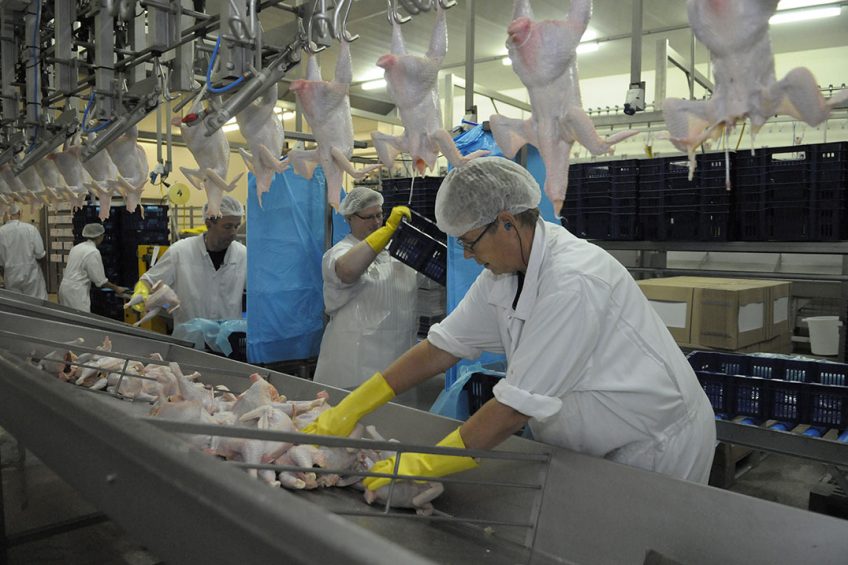World’s no. 1 egg consumer, favours chicken

Mexico’s chicken meat production is on track to see a marginal increase in 2020 with investments expected in genetics, breeders, incubators and farm biosecurity expected in 2021.
In MY 2020, Mexico’s chicken meat production is forecast at 3.675 million MT. The industry has been negatively affected by the country’s economic recession, the coronavirus pandemic, and the uncertainty surrounding Mexico renewing its 3rd country TRQ (tariff rate quota) for poultry. The country is, nonetheless, still on track to see 1.5 to 2% production growth by the end of 2020 thanks to its zoo-sanitary status as free of avian diseases and growing domestic demand with many consumers shifting from pork and beef to more affordable animal and plant proteins.
Increases in investments and production expected in poultry sector
Chicken meat production in MY 2021 is expected to be 3.775 million MT, which is an increase of 2.5 to 3% year-on-year. Vertically integrated producers are expected to invest more in genetics, breeders, incubators, and better biosecurity measures on farms. In MY 2020, chicken meat consumption is forecast at 4.55 million MT. Due to Covid-19, Mexico’s hotel, restaurant and institutional (HRI) sector has suffered a reduction of more than 30% in demand.
Poultry feed consumption on the rise
However, due to its affordability, household demand for chicken meat has grown. Chicken comprises about 60% of household consumer’s meat preference. In MY 2021, chicken meat consumption is forecast at 4.66 million MT.
Poultry feed consumption represents 47.7% of Mexico’s total feed production. In 2020, Mexico’s animal feed production is estimated to be about 38 million MT, of which broilers are expected to consume close to 10.7 million MT and layers 7.4 million MT. In MY 2020, Mexico’s chicken meat imports are forecast at 880,000 MT, and in MY 2021, at 885,000 MT.
 Global egg production continues to rise
Global egg production continues to rise
“IEC data for the year 2018 illustrates the difference with high egg consumption in Mexico (368 eggs) and Japan (337 eggs) and a lower consumption in South Africa (130).
Poultry imports & exports
An unfavourable exchange rate and an estimated decline of 10% in Mexico’s GDP impacted imports in the first half of 2020. Imports will recover again as the HRI sector reopens.
In MY 2020, the Economy Secretariat, Economía, did not authorise a 3rd country TRQ for poultry, and it is expected that this will continue to be the case in MY 2021. The US is the main provider for chicken meat to Mexico, with an estimated 87% market share in 2019. Without the 3rd country TRQ for poultry, Brazil’s 12% market share is conceded to the US, which should enjoy a 99% market share in 2020. In both MY 2020 and MY 2021, Mexico’s chicken meat exports are forecast at 5,000 MT. The US is the main destination for Mexico’s chicken meat exports, but these are limited to heat treated, processed products. Mexico’s authorities are working to obtain US recognition of free of avian diseases to be eligible to export to the US from Mexico’s federally inspected establishments.
Costly turkey meat mainly for self-consumption
In MY 2020, Mexico’s turkey meat production is forecast at 18,300 MT, and in 2021 at 18,500 MT. Many producers in Mexico are switching from turkey to chicken meat production for quicker and higher profits. In fact, turkey production in the country is becoming more for self-consumption and for backyard production, where it serves as extra income for the families living in remote areas. However, costs are rising – backyard turkeys cost an average of US$ 28 per animal compared to a backyard chicken that costs an average of US$ 6.50 per animal.
In MY 2020, turkey meat consumption is forecast at 184,000 MT, and in MY 2021 at 186,000 MT. In 2019, domestic annual per capita consumption of turkey meat in Mexico was 1.43 kg. Turkey meat in Mexico is mostly consumed in processed products, such as cooked hams and sausages, as a combination of turkey and chicken meat. In MY 2020, Mexico’s turkey meat imports are forecast at 167,000 MT, and in MY 2021 at 170,000 MT. The US continues to be the main supplier of turkey meat to Mexico. Without the third country TRQ, US market share increased from 93% in 2019 to 98% as of July 2020. These conditions will prevail through 2021. In MY 2020, Mexico’s turkey meat exports are forecast at 1 MT and again in MY 2021. Mexico exports very small amounts of turkey meat as processed heat-treated products.
 Global poultry industry case studies
Global poultry industry case studies
Taking a deeper look into poultry production worldwide – for more case studies click here
Mexico, the world’s number 1 egg consumer
In MY 2020, Mexico’s egg production is forecast at 3 million MT and in 2021 at 3.1 million MT. In MY 2020, producers have not committed resources into expanding facilities, acquiring better layer genetics, and vertically integrating their operations. In MY 2021, this investment situation is expected to change, with 2.5% year-on-year growth in domestic egg production. Mexico’s egg consumption forecast at 23.6 kg per person in MY 2020, and 24.5 kg in MY 2021. In MY 2020, Mexico’s egg consumption increased year-over-year and is expected to grow further in 2021, Driven by Mexico’s economic recession, an increase in egg consumption is expected to continue. In 2020, Mexico is the world’s number one egg consumer, surpassing even Japan. It is interesting to note that as of July 2020, eggs are 21% more expensive than in July 2019. In MY 2020, Mexico’s egg imports are forecast at 69,000 MT, and in MY 2021 at 70,400 MT.
This information was extracted from a USDA Gain report prepared by Gustavo Lara.













